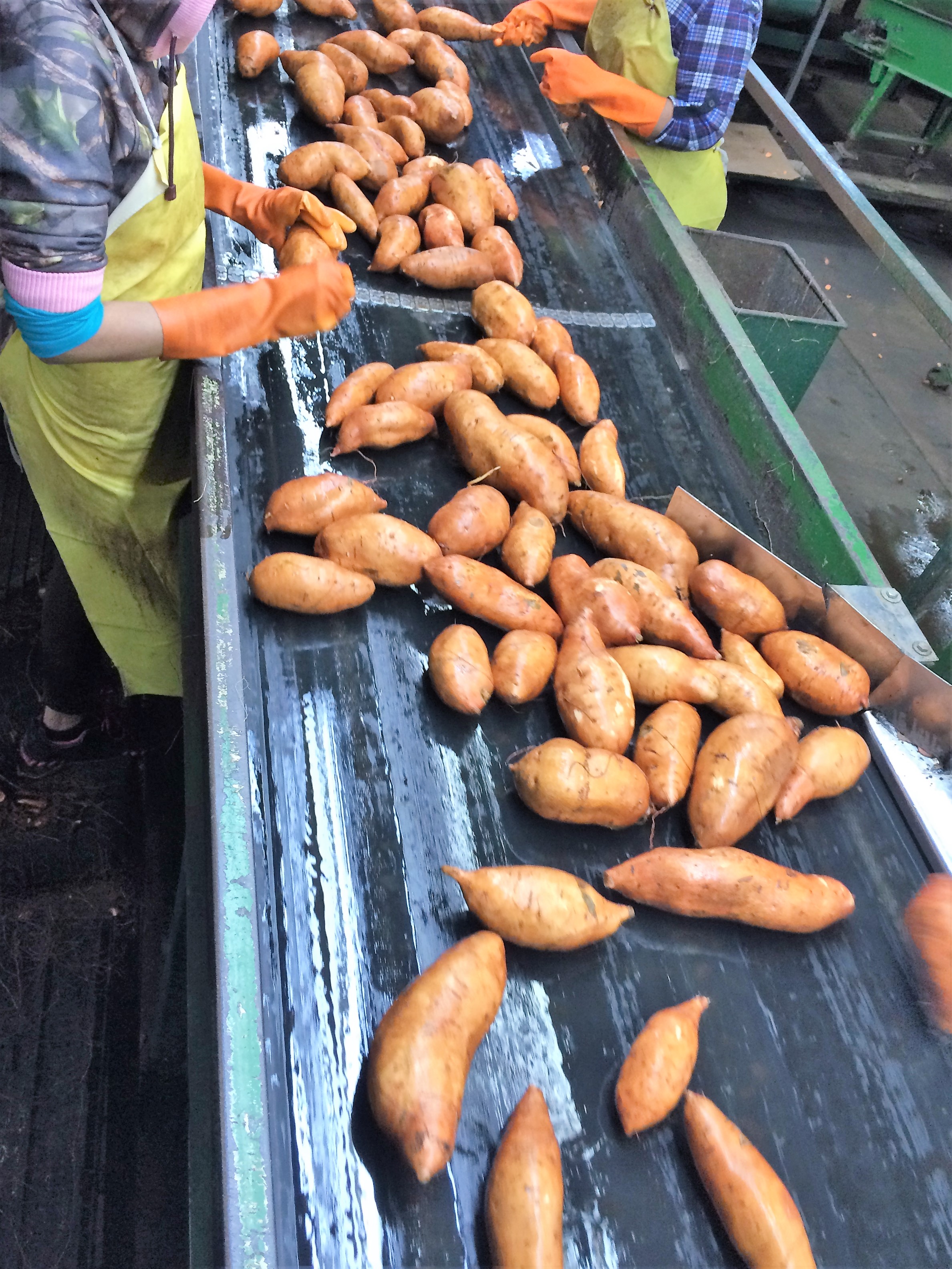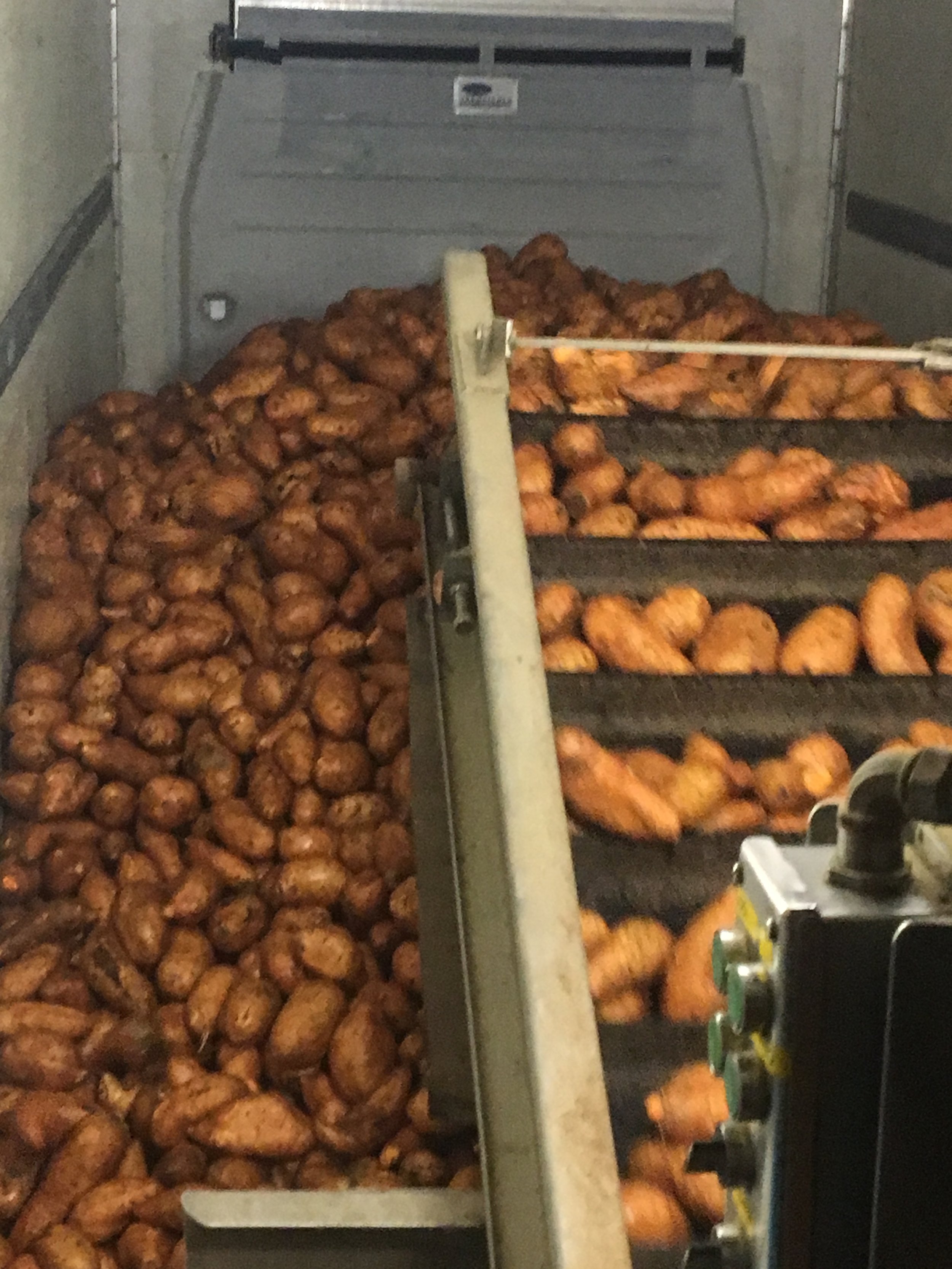Farming Process: From Mississippi to North Carolina
planting
The method is the same no matter who grows the sweet potatoes. Each grower will use setting machines like the one in the photo and plant each potato plant by hand. It’s a very delicate part of the process to make sure the roots are planted the exact depth into the soil for the stem to grow its roots and take a strong hold. This results in producing maximum quality sweet potatoes over the next 95 to 125 days. Typically, the planting process begins in mid to late May and will finish near to the 4th of July Holiday.
3 sweet potato setters and their crews work into the night to get plants set into the ground.
A tractor pulls the setter down hills of dirt while groups of 2 place the sweet potato "slips" into a setting wheel. The wheel then separates the dirt and burys the slip into the soil.
Harvesting
The harvest takes place between 90 and 105 days after the plants are set into the soil. During the harvest, the farms dig the sweet potatoes out of the ground and separate them according to size. They then transfer the sweet potatoes to the large bins that go into storage until the following year. While in storage, the sweet potatoes stay coated in their original dirt to preserve them and to prevent decaying.
A sweet potato harvester is seen digging up Okinawan sweet potatoes in the field.
The sweet potatoes are dug up from the ground and travel up a conveyor belt to the workers. The workers are assigned to a specific size and they are responsible for separating that size from the rest. The bins attached to the side of the digger are stored after harvesting is over.
packing
When it is finally time to ship the stored sweet potatoes, our farms begin the packing process. The sweet potatoes are poured out of the original bins and into an industrial washing pan. After each potato is thoroughly washed, they are transported down a conveyor belt to be sorted into specific size categories. The packing line workers hand sort the potatoes into their correct sizing groups, then they are packaged into their designated boxes. Each completed box of sweet potatoes are inspected, weighed, and stacked onto pallets that will eventually be delivered to the customers.
More sweet potatoes are sorted through on the conveyor belt.
After the potatoes are washed, they are sent down this conveyor belt to be hand sorted and inspected for damage.
PENICK PRODUCE
Penick Produce is one of the largest sweet potato processing facilities in the state of Mississippi. It has recently been purchased by Kenneth Alexander, owner of Alexander Farms, and gives him an additional 2800 acres of land, 12 curing rooms & tons of cooler storage to combine with Alexander Farms. Howard Fisackerly, a longtime friend of Kenneth, has been put in place to run the packing facility. Howard has been involved in the produce business since 1998, working in the Mississippi and North Carolina. Based on Howard's experience and knowledge of the produce industry, it wasn't a surprise that he would be the best candidate for the job. Penick Produce has been in operation since 1956. The company served the sweet potato industry in north Mississippi by buying “process grade” potatoes from area farmers that are not suitable for “fresh market” or retail consumption. That means potatoes are bought primarily during the harvest season and stored for sale throughout the year. Without the operations of Penick Produce, many farmers would have to discard a substantial portion of their harvest.
Howard Fisackerly is showing a sweet potato sizer used at Penick Produce.
The potatoes are pushes up the conveyor belt into the nose of the truck.
Process potatoes get poured from bins onto a conveyor belt to be loaded onto the truck.
Once the nose of the truck is full, they will slide the conveyor belt backwards until the whole truck is loaded with process potatoes. The belt helps keep the truck clean and the potatoes from getting damaged and scratched.










